Are you looking for a delicious and nutritious substitute for black beans?
Black beans are a staple ingredient in many Latin American dishes, but they can also be used in salads, soups, and stews.
They are high in protein and fiber while being low in fat.
However, if you’re unable to find black beans or don’t have them on hand, there are several other ingredients that can be used as substitutes.
From chickpeas to lentils to quinoa and more, here is a list of the 13 best substitutes for black beans so that you can still enjoy all your favorite recipes without worrying about missing out on any essential nutrients.
The 13 Best Substitutes for Black Beans
Black beans are a staple in many recipes, but sometimes they can be hard to find.
Fortunately, there are several alternatives that can be used as substitutes for black beans.
Here are thirteen of the best:
1. Pinto Beans
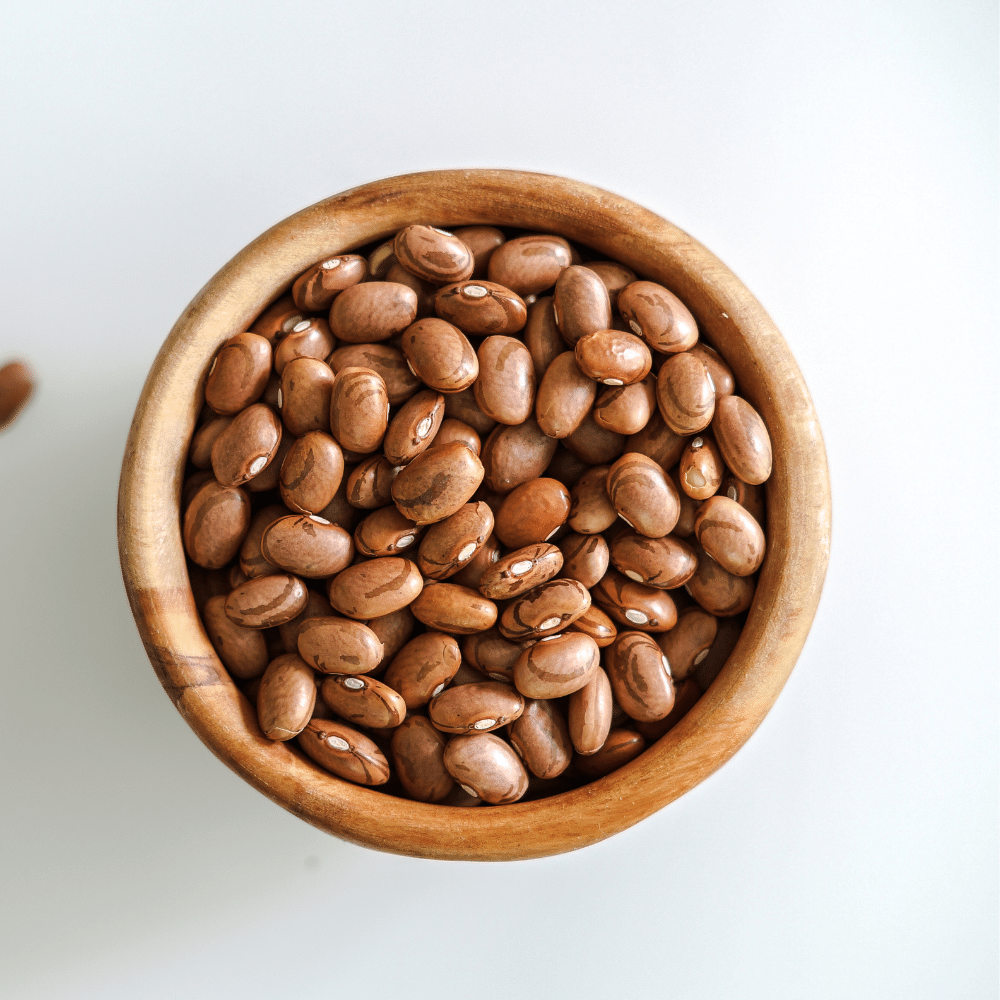
Pinto beans provide a similar flavor profile and texture.
They have a mild nutty taste and creamy texture that makes them an ideal replacement in many dishes.
Pintos can be used in all sorts of recipes from soups, stews, chili, burritos, tacos and even salads.
When using pintos instead of black beans it is important to note that the cooking time may vary slightly due to the different sizes and densities of each bean.
Pinto beans tend to take longer to cook than black beans so you should plan accordingly when making your dish.
In addition, since pinto beans have more starch than black beans they will absorb more liquid while cooking so you may need to add additional broth or water during the cooking process if needed.
2. Kidney Beans

Kidney beans have a similar texture, and when cooked properly, they can be just as creamy and delicious as black beans.
The flavor profile is slightly different, however; kidney beans have a milder taste than black beans do.
This means that you may need to add additional spices or seasonings to your dish to get the same flavor intensity.
One great thing about using kidney beans instead of black beans is that they tend to hold their shape better during cooking.
This makes them ideal for dishes such as salads or chili where you want the individual pieces of bean to remain distinct from one another.
Kidney beans also take less time to cook than black beans do, so if you’re short on time this could be a bonus!
If you don’t have any canned kidney or black beans on hand and only have dried ones available, then it’s still possible to make this substitution work.
Dried kidney and black beans will require much longer cooking times but both types should end up with a similar texture once cooked through properly.
3. Red Beans
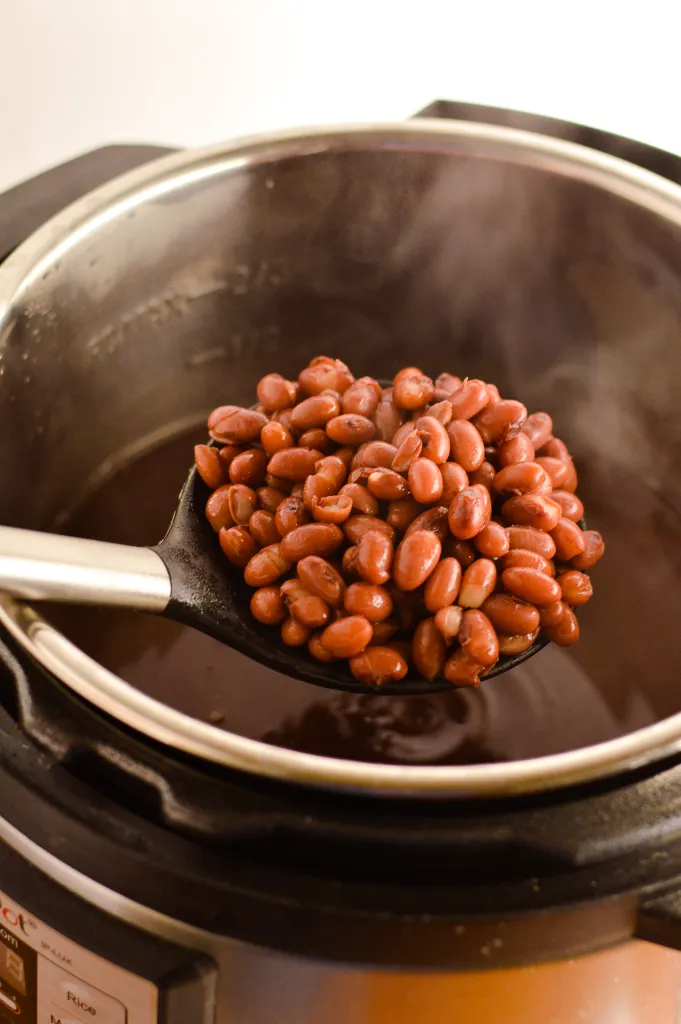
While they have a similar texture and can be used in many of the same dishes, red beans have their own unique flavor that is slightly sweeter than black beans.
They also tend to hold their shape better when cooked, making them ideal for soups, stews, chili and other dishes where you want your beans to remain intact.
When substituting red beans for black beans in recipes, it’s important to remember that red beans take longer to cook than black beans.
You may need to adjust cooking times accordingly or pre-soak the red beans before using them in order to speed up the process.
Red kidney beans are especially hardy and require a longer cooking time than other varieties of red bean so make sure you factor this into your recipe as well.
4. Chickpeas

Chickpeas, also known as garbanzo beans, have a mild flavor that pairs well with many dishes.
They are high in fiber and protein, making them an excellent source of nutrition. In terms of texture, chickpeas can be mashed or pureed to create a creamy consistency similar to black beans.
Chickpeas can be used in place of black beans in most recipes such as chili, burritos, tacos and salads.
When substituting for black beans in soups and stews it is best to add the chickpeas at the end of cooking time so they do not become too soft and mushy.
You may need to adjust the seasonings when using chickpeas instead of black beans because they tend to absorb more flavors than their bean counterparts.
For an even closer substitution you can try using canned refried chickpeas which are already seasoned and ready to eat – just heat them up before adding them into your dish!
5. White Beans

White beans, such as cannellini, navy, or great northern beans, are a great substitute for black beans.
They have a very similar texture when cooked and can be used in the same way.
While white beans may not provide the same depth of flavor that black beans do, they will still give your dish a boost of protein and fiber.
When using white beans as a substitute for black beans in recipes like soups and chili’s, you’ll want to make sure to season them well with spices like cumin or oregano to bring out their flavor.
You may also want to add some diced tomatoes or tomato paste to help create more of the flavors associated with black bean dishes.
Be sure to simmer the dish longer than you normally would with black beans so that all of the flavors can meld together nicely.
6. Lentils

Lentils have a similar texture and can be used to make dishes such as chili, burritos, and tacos.
Lentils don’t require pre-soaking like black beans do, so they cook faster and are easier to prepare.
They also absorb flavors from spices and seasonings well, making them an ideal alternative for adding flavor to your dish.
When substituting lentils for black beans, it’s important to remember that the cooking times will vary slightly.
Lentils typically take about 20 minutes to cook compared to the 45 minutes needed for black beans.
Additionally, you may need to adjust the amount of liquid used in your recipe since lentils absorb more water than black beans do during cooking.
If you’re looking for a healthy plant-based protein source with a mild flavor that easily absorbs other flavors, then lentils are an excellent choice!
With some slight adjustments when it comes to cooking time and liquid amounts, they make a great substitution for black beans in almost any recipe!
7. Black Eyed Peas
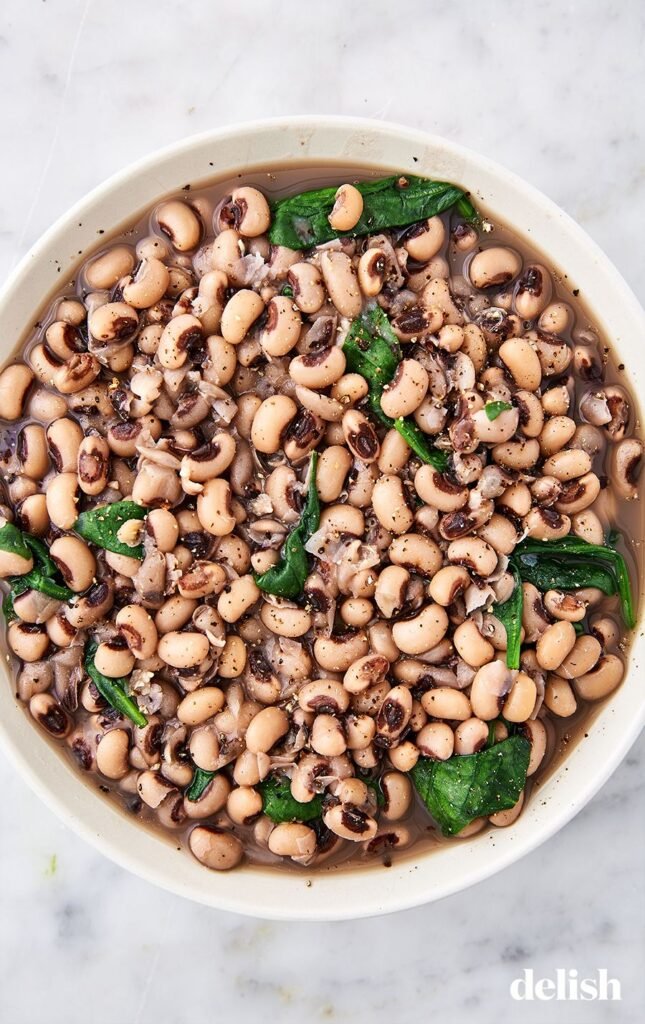
Black-eyed peas, also known as cowpeas, are a type of legume that have been enjoyed in many cultures for centuries.
They are small and round with a black spot on one side, hence the name.
They come both dried and canned and can be cooked in various ways to make delicious dishes.
- Cooking With Black Eyed Peas: Dried black eyed peas should be soaked overnight before cooking them on the stovetop or in a slow cooker. Once they’re soft, they can be used in soups or stews like chili or gumbo, mashed up into fritters or hummus, served over rice as an entrée, or pureed into dips such as hummus. Canned black eyed peas require no soaking and cook quickly – just heat them up with some spices and herbs to add flavor.
- Taste: The taste of black-eyed peas is mild yet earthy with nutty undertones. When cooked properly they become tender but still retain their shape – not mushy like some other legumes – so you get great texture along with flavor when eating them.
8. Mung Beans
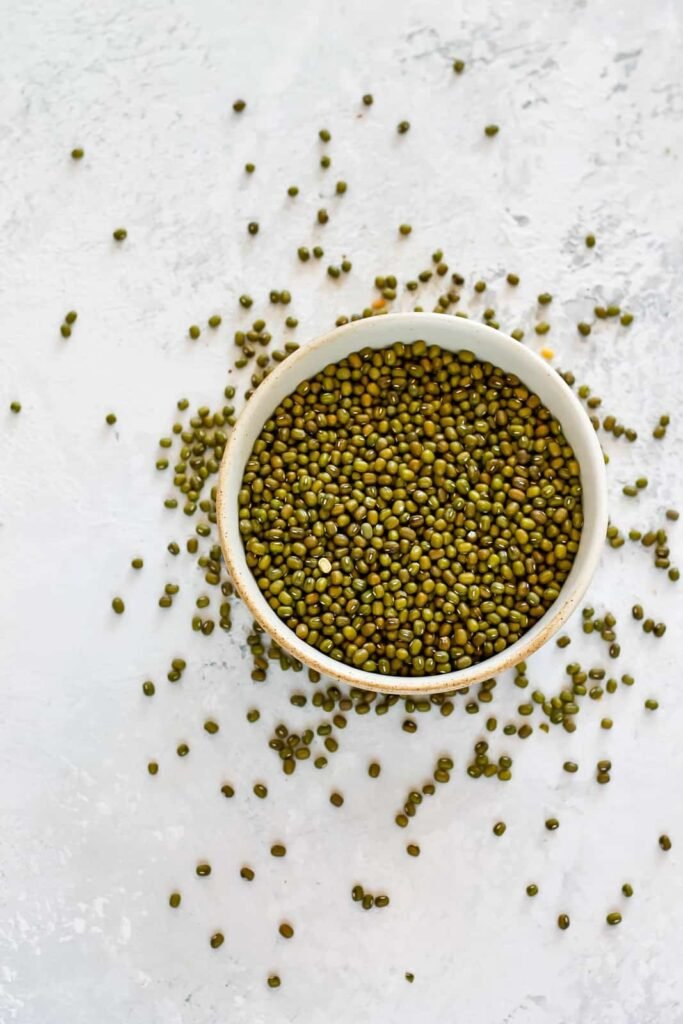
Mung beans are small, green legumes that have been cultivated for thousands of years.
They are also known as moong dal or green gram.
The mung bean has a sweet flavor and is often used in Indian cuisine for soups, curries, and dals.
- Cooking With Mung Beans: Mung beans can be sprouted and eaten raw in salads or sandwiches. When cooked, they become soft and creamy with a nutty flavor. They work well in soups, stews, curries, and stir-fries. For an easy side dish, try simmering them with coconut milk until tender and then season with salt to taste.
- Taste: Mung beans have a mild nutty flavor that pairs nicely with other spices such as cumin or coriander. They can also be slightly sweet when cooked down into a thick stew or curry-like consistency.
9. Fava Beans
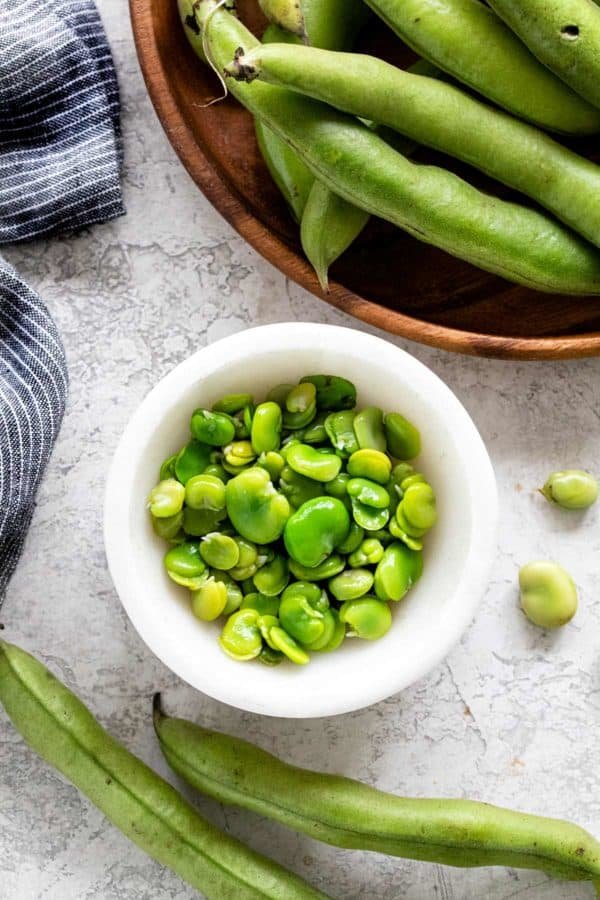
Fava beans, also known as broad beans, are a type of legume that have a long history of cultivation.
They are green and oval-shaped with a creamy texture when cooked.
Fava beans can be eaten fresh or dried, but they must be peeled before being cooked.
- Cooking With Fava Beans: Fresh fava beans should be blanched in boiling water for 1-2 minutes before eating them. This helps to soften the skin and make them easier to peel. Dried fava beans need to be soaked overnight before cooking, then boiled for 20-30 minutes until tender. Once cooked, fava beans can be added to salads, soups, stews or puréed into dips and spreads.
- Taste: Fava beans have an earthy flavor with nutty undertones that pairs well with other ingredients like garlic and herbs. When cooked properly they have a creamy texture that makes them ideal for adding to dishes like hummus or mashed potatoes.
10 Black Soy Beans

Black soybeans are a variety of legume that is native to East Asia.
They have a black skin and a yellow or white interior, and they are slightly larger than regular soybeans.
Black soybeans have been used in traditional Asian cuisine for centuries, and they are becoming increasingly popular in the Western world due to their high nutritional value.
- Cooking With Black Soy Beans: Black soy beans can be boiled, steamed, stir-fried, or mashed into dips. When cooked, black soy beans become creamy with an earthy flavor. They can be added to soups and stews for extra protein and texture, or made into a vegan patty for burgers. For breakfast or dessert, try adding them to oatmeal or making them into pancakes!
- Where To Buy: You can find black soy beans in most health food stores as well as some grocery stores. You can also buy them online from various vendors such as Amazon or specialty websites like Bob’s Red Mill.
11. Navy Beans

Navy beans, also known as haricot beans or pea beans, are small white legumes with a mild flavor.
They are the same bean used to make baked beans and have a creamy texture when cooked.
- Cooking With Navy Beans: Navy beans can be boiled, simmered or pressure cooked. The cooking time will vary depending on how you prepare them but they generally take around an hour to become tender. If you’re using canned navy beans, they’ll just need to be rinsed before adding them to your recipe. Navy beans can be added to soups and stews for extra protein and fiber, or mashed into dips and spreads. They can also be pureed for use in casseroles and other dishes that call for a creamy texture.
- Recipes To Substitute: For recipes that call for black beans such as tacos, burritos, chili or refried beans try substituting navy beans instead. You may need to adjust the seasonings slightly but navy beans will still provide great flavor and texture in these dishes. Another option is making your own black bean substitute by combining navy beans with smoked paprika or chipotle powder to give it an earthy smoky flavor similar to traditional black bean dishes.
12. Great Northern Beans

Great Northern beans, also known as white beans, are a type of legume native to Central and South America.
They are medium in size and have a mild flavor and creamy texture.
- Cooking With Great Northern Beans: Great Northern beans can be used in many dishes, from soups to salads to casseroles. When cooked, the beans become tender but still maintain their shape. The best way to cook them is by soaking them overnight before cooking them on the stovetop for about an hour or until they’re soft. If you’re short on time, you can use canned Great Northern beans instead of dried ones; just make sure to rinse off any excess salt or preservatives before using them in your dish.
- Where To Buy: You can find dried Great Northern beans at most grocery stores, either in the bulk section or with other canned and dried goods. You can also buy canned versions of these beans at most supermarkets as well.
13. Butter Beans

Butter beans, also known as lima beans, are large, flat-shaped legumes with a mild flavor and creamy texture.
They come in both green and white varieties and are available dried or canned.
- Cooking With Butter Beans: Dried butter beans need to be soaked overnight before cooking. To make them even creamier, you can add a tablespoon of baking soda to the soaking water. After soaking, drain the beans and cook in boiling salted water for about an hour until tender. Canned butter beans require little preparation; just rinse them before using. Add cooked butter beans to soups and stews for extra protein and fiber, or mash them up for a delicious dip or spread.
- Recipe Ideas: Try adding cooked butter beans to your favorite chili recipe for added texture and flavor. You can also use mashed butterbeans as a sandwich spread or as an alternative to hummus on crackers or toast points. For something sweet, try making baked goods such as muffins with mashed butterbeans instead of oil or eggs!
Conclusion
In conclusion, black beans are a versatile and tasty ingredient that can be used in a variety of dishes.
However, if you don’t have black beans on hand, there are plenty of other types of beans that can be used as a suitable substitute.
The best substitutes for black beans are pinto beans, kidney beans, red beans, chickpeas, white beans, lentils, black eyed peas, mung beans, fava beans, black soy beans, navy beans, great northern beans, and butter beans.
Each of these beans has a unique flavor and texture which can be used to create delicious dishes.
With so many beans to choose from, it’s easy to find the perfect substitute for black beans in any recipe.
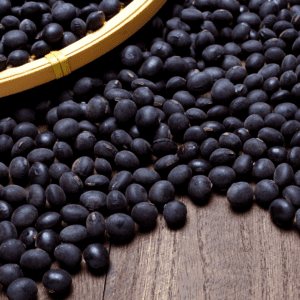
The 13 Best Substitutes for Black Beans
Ingredients
- Pinto Beans
- Kidney Beans
- Red Beans
- Chickpeas
- White Beans
- Lentils
- Black Eyed Peas
- Mung Beans
- Fava Beans
- Black Soy Beans
- Navy Beans
- Great Northern beans
- Butter Beans
Instructions
- Pick your favorite substitute from the list above.
- Follow cooking directions for your selected substitute with the proper ratio of ingredients.
Jenny has always been passionate about cooking, and she uses her platform to share her joy of food with others. Her recipes are easy to follow, and she loves giving tips and tricks to help others create their own unique culinary creations.

